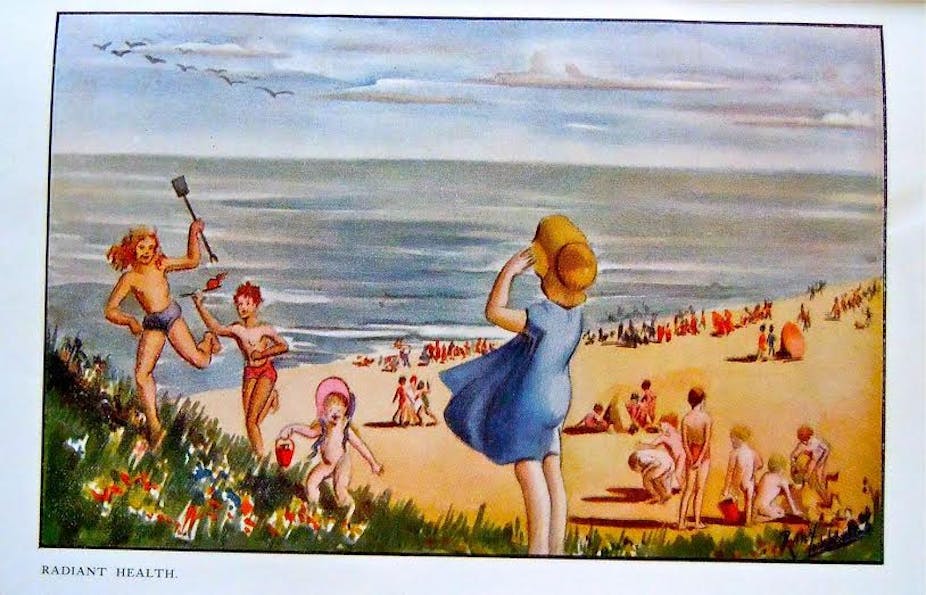There are many ways for young people to learn about sex. In talks between parents and children, in the sharing of information between peers, in initiation schools and in ceremonies preceding marriage, young people have learned about sex and sexual reproduction. They also learn about how societies define appropriate and inappropriate sexual behaviour.
The idea that sex education should be taught at school is fairly recent and is strongly connected to the increasingly important roles that schools play in moulding future citizens. Most sex education programmes in this space tended until quite recently to be fairly conservative. They taught children and young people that sex should only occur in monogamous, heterosexual marriage.
Debates about the need to make formal sexual education available to South African youth surfaced during the 1920s. This was a period of massive social change. The decade was marked by a series of strikes and protests as the segregationist state began to introduce legislation that marginalised black people socially, politically and economically.
It was also a period of rapid urbanisation and the growth of slums in which poor black and white South Africans lived cheek-by-jowl. Given the white government’s pre-occupation with race, this raised alarm bells because of the heightened opportunities for interracial sex.
It was against this backdrop that sex education became a political tool. Missionaries, public health officials and welfare activists used it to try and sculpt a new generation of respectable black African adults who would live meekly under white rule.
They also sought to teach white men and women about the significance of sex, reproduction and family to the stability of the South African state.
The missionaries’ position
In pre- and early colonial societies in southern African, sex education was woven into the processes that marked a person’s entry into adulthood. Boys and girls learned about sex, relationships and contraception through initiation rites. By the early 20th century, these rituals were sidelined as more young people left their rural homes and moved to cities.
Christian missionaries and ministers stepped into the gap. They wanted to provide sexual socialisation for young, urban black Africans. Sex education manuals formed a significant part of this strategy and most were published by missionary presses. These manuals sought to persuade young readers that sex was only legitimate after and within the confines of marriage.

One of the Church of England’s most popular publications was called God, Love, and Marriage. The text, written by a Bloemfontein-based Anglican nun named Sister Enid, provided only rudimentary information about puberty. It devoted far more space to discussing what constituted respectable, sober adulthood. It and other manuals were directed towards the creation of a respectable, Christian urban black African middle class.
Racial differences in sex ed
Sex education manuals for middle class white children were very different. They sought to police racial boundaries in a society where interracial sex was increasingly illegal. The segregationist state passed the Immorality Act in 1927, banning sex between different race groups. The apartheid state revised this legislation in 1950. It was only repealed in 1985.
In 1934 the Red Cross and Johannesburg Public Health Department published the slim illustrated manual Facts about Ourselves for Growing Boys and Girls. Its aim is, firstly, to explain human reproduction. This knowledge is framed so that readers are left in no doubt about the consequences of sex outside marriage. They are warned of “the most terrible diseases from which man has suffered” and reminded that children produced during pre- or extra marital sex are illegitimate.
In 16 pages, the manual devotes one paragraph to an account of sexual intercourse and suggests that it is wiser “to avoid undue interest in the sex organs.” Readers should, instead, “turn” their “thoughts elsewhere.”
That’s not to say the manual and others of its kind dismiss sex as entirely wrong. Facts about Ourselves says that as long as the sex in question involves a married couple, it is absolutely essential to the propagation of the “race”. This is the manual’s second purpose: persuading white youth that the security of white rule in South Africa is located in the family.
The author argues: “It is your duty to help your race to progress” by having children. One section describes how white youth should conduct themselves in the company of African men. Girls should take care not to wear clothing that would draw attention to their bodies and should never allow African men into their bedrooms: “The temptation to the native may be far more severe than is ever realised, and any wrong-doing on his part would be very terrible to a girl, while the law visits upon him a very dreadful punishment.” Indeed, legally, black men found guilty of having sex with white women were punished far more harshly than the women.
A changing curriculum
The content of Facts about Ourselves may shock the contemporary reader but its argument that sex should occur only between married men and women of the same race endured. When guidance classes were introduced to white schools in 1967 and black schools in 1981 they included only a little sex education and were equally conservative. Since 1994, sex education has been part of a compulsory subject in all South African schools called Life Orientation.
Researchers argue that Life Orientation tends to emphasise abstinence as the only form of appropriate sexual behaviour outside of marriage. This strategy has had little impact on reducing teenage pregnancy and rates of STDs internationally.
There does seem to be hope on the horizon, though. The National Adolescent Sexual and Reproductive Health and Rights Framework Strategy was approved by South Africa’s Cabinet earlier this year.
It advocates comprehensive sex education and aims to provide all young people, regardless of sexual orientation with advice, information, and support. If this strategy is implemented, young South Africans will for the first time be taught sex education that emphasises tolerance, understanding and respect rather than a curriculum that serves to shame and to divide.

